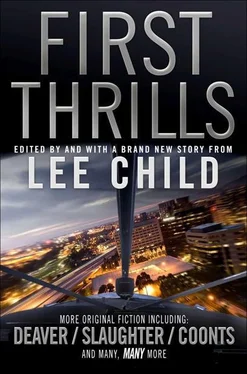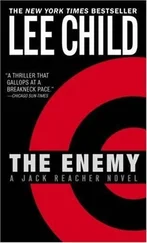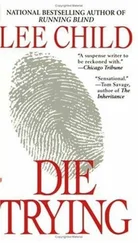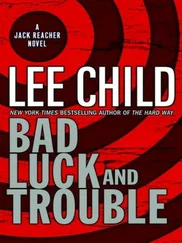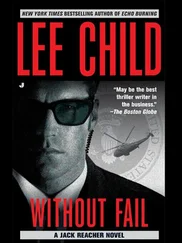Solo didn’t speak the words, he merely thought them. The computer read the tiny impulses as they coursed through his brain, boosted the wattage a billionfold, and broadcasted them into the universe. Yet the thoughts could only travel at the speed of light, so unless there was an interplanetary ship, or a saucer relatively close in space, he might receive no answer for years. Decades. Centuries, perhaps.
Marooned on this savage planet, he had waited so long! So very long.
Solo wiped the perspiration from his forehead as the enormity of the years threatened to reduce him to despair.
He forced himself to take off the headband and leave the pilot’s seat.
Opening the saucer’s hatch, he dropped to the deck. He closed the hatch behind him, just in case, and went below to his cabin. No one was in the passageways. Nor did he expect to find any of the crew there. He glanced into one of the crew’s berthing spaces. The glow of the tiny red lights revealed that every bunk was full, and every man seemed to be snoring. They had had an exhausting day raising the saucer from the seabed.
In his cabin Solo quickly packed his bag. He stripped the blankets from his bunk and, carrying the lot, went back up on deck. Careful to stay out of sight of the bridge, he stowed his gear in the saucer.
A hose lay coiled near a water faucet, one the crew routinely used to wash mud from cables and chains coming aboard. Solo looked at it, then shook his head. The water intake was on top of the saucer; climbing up there would expose him to the man on the bridge, and would be dangerous besides. He couldn’t risk falling overboard, which would doom him to inevitable drowning-certainly not now. Not when he was this close.
He removed the tie-down chains one by one and lowered them gently to the deck so the sound wouldn’t reverberate through the steel ship.
Finally, when he had the last one off, he stood beside the saucer, with it between him and the bridge, and studied the position of the crane and hook, the mast and guy wires. Satisfied, Adam Solo stooped, went under the saucer, and up through the hatch.
The first mate was checking the GPS position and the recommended course to Sandy Hook when he felt the subtle change in the ship’s motion. An old hand at sea, he noticed it immediately and looked around.
The saucer was there, immediately in front of the bridge. But it was higher, the lighted canopy several feet above where it had previously been. He could see Solo’s head, now seated in the pilot’s chair. And the saucer was moving, rocking back and forth. Actually it was stationary-the ship was moving in the seaway.
DeVries’s first impression was that the ship’s motion had changed because the saucer’s weight was gone, but he was wrong. The anti-gravity rings in the saucer had pushed it away from the ship, which still supported the entire mass of the machine. The center of gravity was higher, so consequently the ship rolled with more authority.
At that moment Jim Bob Bryant came up the ladder, moving carefully with a cup of coffee in his hand.
He saw DeVries staring out the bridge windows, transfixed.
Bryant turned to follow DeVries’s gaze, and found himself looking at Adam Solo’s head inside the saucer. Solo was too engrossed in what he was doing to even glance at the bridge. The optical illusion that made the saucer appear to be moving gave Bryant the shock of his life. Never, in his wildest imaginings, had he even considered the possibility that the saucer might be capable of flight.
Like DeVries, Bryant stood frozen with his mouth agape.
For only a few more seconds was the saucer suspended over the deck. As the salvage ship came back to an even keel the saucer moved toward the starboard side, rolling the ship dangerously in that direction. Then the saucer went over the rail and the ship, free of the saucer’s weight, and rolled port with authority.
Bryant recovered from his astonishment and roared, “ No! No, no no! Come back here, Solo! It’s mine. Mine, I tell you, mine !”
He dropped his coffee cup and strode to the door that led to the wing of the bridge, flung it open, and stepped out. The mate was right behind him. Both men grabbed the rail with both hands as the wind and sea spray tore at them.
The lighted canopy was no longer visible. For a few seconds Bryant and DeVries could see a glint of moonlight reflecting off the dark upper surface of the departing spaceship; then they lost it. The night swallowed the saucer.
It was gone, as if it had never been.
“If that doesn’t take the cake!” exclaimed the Reverend Jim Bob Bryant. “ The bastard stole it! ”
“ Adam, thisis Star Voyager. So good to hear from you.”
“I am alive. I have a saucer. I can meet you above the savage planet.” The voice from the starship told him when their ship would reach orbit. Solo mentally converted the time units into earth weeks. Three weeks, he thought. Only three more weeks.
“I must pick up the others,” he thought, and the com system broadcast these thoughts.
Adam Solo topped the cloud layer that shrouded the sea and found himself under a sky full of stars.
***
STEPHEN COONTSis the author of fifteen New York Times bestsellers, the first of which was the classic flying tale Flight of the Intruder.
Stephen received his Navy wings in August 1969. After completion of fleet replacement training in the A-6 Intruder aircraft, Mr. Coonts reported to Attack Squadron 196 at Naval Air Station Whidbey Island, Washington. He made two combat cruises aboard USS Enterprise during the final years of the Vietnam War as a member of this squadron. His first novel, Flight of the Intruder, published in September 1986 by the Naval Institute Press, spent twenty- eight weeks on The New York Times bestseller lists in hardcover. A motion picture based on this novel, with the same title, was released nationwide in January 1991. The success of his first novel allowed Mr. Coonts to devote himself to writing fulltime; he has been at it ever since. He and his wife, Deborah, enjoy flying and try to do as much of it as possible.

H owardBoyd’s time was up.
Twilight had descended on the mountain by the time he exited the dining hall at the base of the slopes, clipped back into his skis, and returned to the chairlift.
He was met with disappointment.
“Lift’s closed, pal,” said the terminal operator as Howard approached. The man was clearing dirty sludge from the loading area with a shovel.
“Already?” Howard skied forward until his waist met the yellow rope blocking the line entrance. “But can’t I just make one more run, buddy?”
“It’s Freddy, and no you can’t.” The operator dodged an empty lift chair moving past. “It’s five o’ clock. Last skiers are coming down now.”
Howard slid his sleeve off his Rolex. “I got four fifty-one. And I can make this run in a hell of a lot less than nine minutes.”
“Swell. Trouble is it’s an eighteen-minute ride to the top.”
“Come on, man. The cell service up here is for shit; I had to go inside to phone the office, and I just got tied up. Give me a break, will ya?”
“Forget it, we’re closed.” The operator jammed the shovel into the snow. “Marvin’s probably already left the terminal up top anyway.”
“Marvin, eh? Well can’t you check if he’s still working up there? Come on, Freddy, have a heart.” Howard unzipped the breast pocket of his bib and presented a fifty-dollar bill to help change the man’s mind. It wasn’t until he brought out a second fifty that Freddy finally gave in.
Читать дальше
